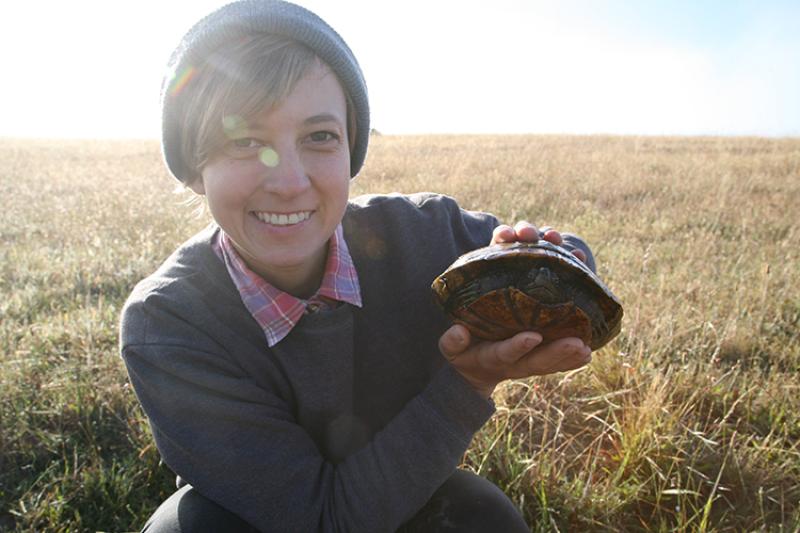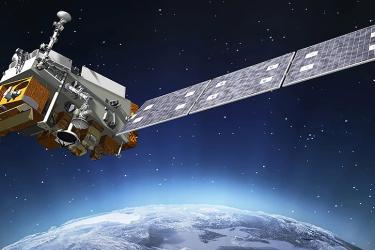Victoria (Tori) Kentner is a Data Scientist and Geographic Information System (GIS) specialist for the Northeast Fisheries Science Center’s Habitat Ecology Branch working on the Northeast Regional Habitat Assessment. Her home base is at our James J. Howard Marine Sciences Sandy Hook Lab in Highlands, New Jersey.
Can you tell us a little about yourself—where you grew up, how you got interested in science, where you went to college?
I think I've always been a scientist. As a kid I spent almost all my time outside exploring, collecting, and observing the natural world. I tested my parent’s patience with my insistent need to know "why."
My career journey has been delightfully meandering. After earning a biology degree from York College of Pennsylvania, I held several seasonal positions including loon biologist on New Hampshire’s lakes, whale shark researcher in the Seychelles, invertebrate zoologist for New Jersey Audubon, and turtle biologist for Point Reyes National Seashore. I earned my master’s degree from San Francisco State University, where my research focused on nudibranch populations inside and outside marine protected areas. After I finished my master’s, I noticed many job postings listed GIS as a required or preferred skill set. When I realized GIS meant making maps and visualizing geospatial data, I was instantly hooked. I had found my niche. I love the creativity involved in visualizing science and helping data tell its story.
While earning a GIS Certificate with a Concentration in Environmental Analysis from San Francisco State University, I developed a protocol for stitching together high-resolution images of the rocky intertidal zone into a single 3D orthoimage. I could then use eCognition to classify the substrate ground cover, including identifying different types of algae or measuring the size of mussel beds. The National Park Service saw one of my conference presentations on this work and hired me to map and classify the habitat in several of their parks, including Alcatraz and Muir Woods.
In 2017, I started a position at NOAA as a GIS specialist in the Science Center’s Habitat Ecology Branch on a wind energy assessment. From there I was involved in a number of projects including deep-sea coral habitat research and species distribution modeling. This work led to my most recent project, the Northeast Regional Habitat Assessment, where I focus on data analysis, modeling, and building a R Shiny app for real-time analysis of inshore state fisheries data.
Why did you want to become a scientist?
I became a scientist because I am in awe of the natural world. My hope is to bring data to life using data analysis and visualization, to inspire others to see the beauty and value in protecting our natural resources.
What advice do you have for the next generation of women scientists about a career in fisheries and/or marine science?
Don’t be afraid to ask for what you want. I got into grad school because I called my future mentor on the phone. He hadn't answered the email I had previously sent him because he was busy and it slipped his mind, but luckily he did answer the phone. A week later I was in his office and the next semester I was in his lab.
Find your niche—it helps to give you an edge. For me, it was GIS and data analysis. To find yours don’t be afraid to follow your spark. You will get hints, whispers of possibilities, and if you follow them amazing things happen.
Share your work. I don’t know anyone who loves giving talks, but so many of the opportunities I’ve had have come from someone hearing me give a presentation about my work.
The great thing about a career in science is you never know what opportunities are right around the corner. It’s not always easy but it’s worth the effort.
For more information, please contact Heather Soulen.




